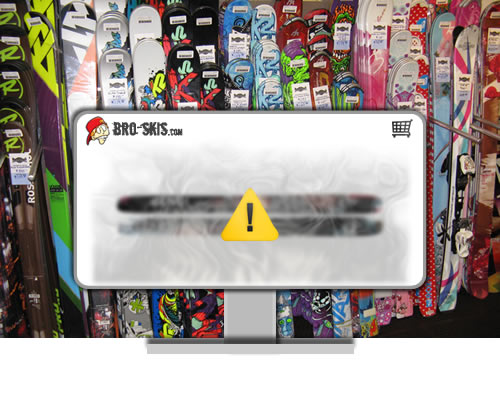Once upon a time, skiers had to go to ski shops to buy their equipment. How quaint!
Now, with just a few keystrokes, one can visit scores of online gear purveyors, most of which blare messages of bargains galore behind their glistening portals.
The online marketplace is booming, one of the few bright spots in an otherwise sagging ski economy. Skiers across America are convinced that with a little research they can find their perfect match without the intervention of a trained specialist, and I’m quite confident such satisfactory transactions occur every day. I am less confident that all of them go well.
The reason I’m skeptical that all online ski sales are likely to be founded on well-informed buying decisions is that I interview real skiers more or less non-stop for at least three days a week, either standing before a long wall of skis or kneeling before a boot bench. Many profess to having done a good bit of research and a few bring their notes along, perhaps to demonstrate that they aren’t naïve consumers ripe for the plucking.
While I don’t have enough data to provide a statistical breakdown, I can say that most results of consumer-guided research fall into three categories: 1) well done, 2) hilarious and 3) dangerous.
For every three skiers we see in the shop, there must be at least one who never crosses a ski shop threshold. This invisible cadre of ski buyers must be confident in their research or else they wouldn’t hit the “Add to cart” button, yet my tingling spider sense tells me that their conclusions are no more likely to be on target than those of the skiers we do see.
In order to sharpen the edges on my point, allow me to bring in the human element. Roughly a week ago I met a couple in front of the boot wall at Bobo’s. While the boots were intended for him, it was the wife who had done the research, and it was clear she had read a lot. She held her page of notes close to her chin, like a poker hand, but I could tell by peeking at its dog-eared corners that it was filled past the margins.
After a few cordial yet slightly guarded moments of chitchat, she shared her first possibility for hubby’s boots. It was hysterically off base, so far out in left field as to not be in the stadium. We decided to write that one off as a mere curiosity driven to the surface by her research, but not necessarily “the boot,” thank the Lord. So on to choice two.
Choice two was so ridiculous that I couldn’t help breaking out in laughter, which I have just enough couth to realize is not appropriate behavior. Wiping the tears from my eyes as I apologized for my reaction, I was able to successfully propose that I subvert her process somewhat and divert us directly to the bench for an examination of hubby’s pedal extremities.
This little Tale from Retail had a very happy ending, and a good deal of wife’s research paid off when I would say or do something she’d read about. She ended up being a great ally in moving the boot fitting process along, so her research initiative was ultimately validated. However, if the only place this lovely couple was able to shop for boots were the Internet, all her earnest efforts would have landed him in an unskiable mukluk, size unknown.
The reflective reader may protest that boots provide a poor example, especially in light of how many skiers who do patronize a brick and mortar ski shop nonetheless end up in inappropriate and/or misfit boots. I can assure you that the wisdom of many a self-taught ski buyer is not one watt brighter.
Witness the phenomenon of the “indie” ski, micro-brands that depend on direct-to-consumer Internet sales for their survival. Some are sought out because they are highly specialized tools, such as pipe & park competition skis or super-sized powder rides. But others are deemed worthy simply because they are relatively rare, have a small posse of ardent adherents and emit the exotic aroma of being “handmade.”
Let’s dispense with this last point first. All adult skis are to one degree or another handmade, and no ski can be manufactured sans machinery. The better ones tend to require more of the latter. Often “handmade” is simply code for low-tech, which is hardly a badge of courage. The pity is that nearly hidden in this field of small fry are a few real craftsmen with engineering backgrounds, capable of producing elite products. But consumers seem to rate indie brands more by their bro factor than their technical merits.
To show that I’m not the sort to gripe about a subject while offering no solutions, allow me to summarize the situation and suggest a way forward. The number of ski sales consummated on the Internet rises every year, and the ski information marketplace has clearly shifted from print to online resources. The fly in this ointment is the relative paucity of reliable, authentic, thorough and unbiased online guidance for these Internet shoppers.
That’s why I’ve assumed the role of editor and publisher at realskiers, to help develop an online library, not just of product reviews and ratings, but blogs, articles, essays and video segments devoted to helping you better understand equipment and its relationship to your enjoyment of our sport.


